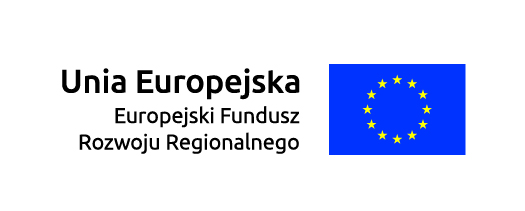Opuszczasz polską wersję strony.
Na stronie anglojęzycznej nie będziesz mieć możliwości kontynuacji zakupów.
Czy chcesz przejść na wersję anglojęzyczną?
TAK NIE
Mirosław Gąsieniec was born on 22 May 1954 in Brzeg. He was a Polish composer and a pianist. Gąsieniec studied piano under J. Filc at the State Primary School of Music in Brzeg, then under J. Godzieszewski (1968–1970) and W. Zalipski (1970–1973) at the State Secondary Music School in Wrocław, and at the State Higher School of Music under the tutelage of J. Godziszewski and A. Głosza (1975–1979, he graduated with honours). He took part in masterclasses as an active participant: in Weimar – piano classes with I. Gornostajewa (1972), Duszniki-Zdrój with W. Mierżanow (1979), and in Łańcut – chamber music class of K. Wiłkomirski (1985). He received twice the scholarship from the Fryderyk Chopin Society, in 1979 and 1980. Gąsieniec studied composition as a private scholar and a student of W. Lutosławski (1972, 1980) and under Z. Herembeszta and L. Wisłocki at the State Higher School of Music in Wrocław (currently the Karol Lipiński Academy of Music) – he graduated with honours in 1988. Quote from an interview: “I started composing as a small boy, initially the solo piano pieces, but finishing the State Primary School of Music in Brzeg, I already had several pieces for piano and orchestra in my folder with compositions, including Fantazja polska (‘Polish Fantasy’) and the fragments of the piano concertos. My youthful creative work was supported by the two teachers of the local music school – Feliks Kącki was the first one who introduced me to the issues of instrumentation of the symphony orchestra, and Jerzy Filc, who taught me harmony, piano, and composition after the regular lessons. […] Because of the lack of proper composition classes at the secondary school, I decided to ask for such lessons a Polish composer whom I valued the most. When I was 18, my dreams came true, after a private meeting with Witold Lutosławski he gave me a consent for consulting my pieces, which, along with his simultaneous financial support, lasted eight years.”
Mirosław Gąsieniec started his professional work as a piano teacher at the State Primary School of Music in Brzeg (1974–1975). Over the period 1980–1985 he played in chamber ensembles in Germany. He was employed as a reader, assistant, and a senior lecturer by the Karol Lipiński Academy of Music in Wrocław since 1985 to 1994, and again since 1999. Over the period 1991–94, having been the director of the Wrocław branch of the Polish Composers’ Union, he initiated a series of concerts “Kompozytorskie portrety” (‘The Composers’ Portraits’). An originator, co-author, and, since 1991, an art director of the International Silesian Music Festival “Porozumienie” (‘Communication’). A chairman of the Foundation for Mutual Understanding in Europe ‘Our Silesia – Our Europe.’ During 1998–1999 he was the director of “Rodzina” (‘Family’) Radio of the Archdiocese of Wrocław. He performs as a pianist and chamber musician in Poland and abroad (Germany, the Netherlands, France, Italy).
The creative output of Gąsieniec consists of over 20 works, including 6 large oratorio-cantata forms (composed at the special request of cardinal Henryk Gulbinowicz – a metropolitan bishop of the Archdiocese of Europe, at the special request of Kurt Masur, and commissioned by Neue Lausitzer Philharmonie), works for orchestra, chamber ensemble, piano, songs, and film music. Additionally, he is an author of virtuoso arrangement of pieces by F. Liszt, E. Liebling, and J. Strauss. His compositions were performed at the festivals of contemporary music (New Music Days, Festival of Polish Contemporary Music in Wrocław, ‘Warsaw Autumn’), at the International Silesian Festivals of Music “Porozumienie,” as well as in Germany, the Netherlands and Belgium. By the end of the eighties Mirosław Gąsieniec composed various instrumental pieces, and during the nineties he focused entirely on oratorio-cantata forms. Initially (in the second half of the seventies), he remained influenced by Lutosławski and his technique of controlled aleatorism (e.g. ‘Triptych for 11 Instruments’). Subsequently, he returned to a more traditional language, skilfully adapting the elements of the past styles (e.g. neoclassicism in “Toccata,” neoromanticism and baroque in oratorio-cantata works) and consciously simplifying his language in order to achieve better communication (cantata “Saint John of God”). His chamber and orchestral pieces are characterised by discipline, economy of sound, and, in piano pieces – trait of virtuosity.
Mirosław Gąsienie is a prizewinner of Polish competitions for composers “Forum Młodych 77” (‘Youth Forum 77’) in Cracow (3rd prize for ‘Metamorphoses’), Young Musicians for a Young City in Stalowa Wola (1979, 3rd prize for ‘Triptych’), and international competitions – ‘Jeunesses Musicales’ in Belgrad (1978, 2nd prize in the category of symphonic music for ‘Toccata’) and in Bad Orb (1981, 2nd prize and the Audience Award for ‘Spanish Suite’). He has been a member of the Polish Composers’ Union since 1977 (1991-1994 he was a chairman of the board of the Wrocław Branch) and of the Association of Polish Musicians (SPAM) since 1985.

 x
x
Administratorem dobrowolnie podanych danych osobowych jest Polskie Wydawnictwo Muzyczne z siedzibą w Krakowie (31-111) przy Al. Krasińskiego 11A. Twoje dane osobowe będą przetwarzane w celu wysyłki Newslettera zawierającego informacje marketingowe administratora danych. Posiada Pani/Pan prawo dostępu do treści oraz poprawiania swoich danych osobowych. Informujemy, iż poza podmiotami uprawnionymi na podstawie przepisów prawa, zebrane dane osobowe nie będą udostępniane.
Zamknij




